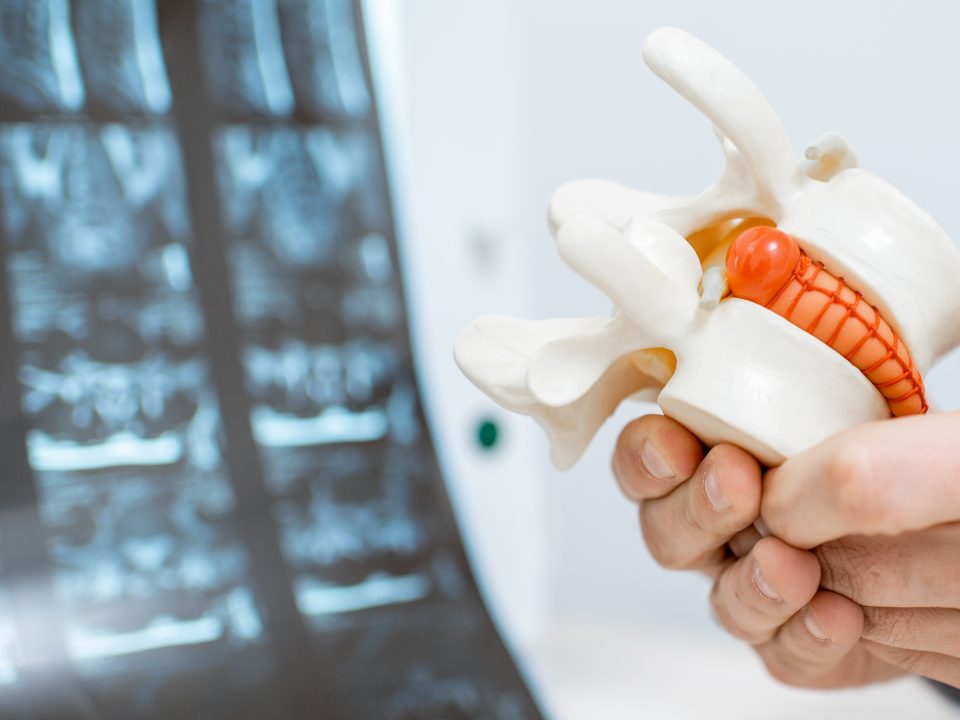
The decompression neurovertébrale: an alternative non-invasive to your neck.
05/03/23
The stenosis foraminal and spinal stenosis cervical spondylosis : causes, symptoms and treatment options
05/03/23Disc pathologies of the cervical spine (neck): disc bulge, disc narrowing, disc herniation or disc protrusion and their treatments
The cervical spine is a complex and essential structure in our body that supports the head and protects the spinal cord. It is made up of vertebrae, intervertebral discs and ligaments. Cervical disc pathologies are common and can cause neck pain, stiffness and neurological symptoms. Common disc pathologies include bulging of the disc, disc pinching and disc herniation or disc protrusion. In this article, we will explore these different pathologies and their possible treatments, with emphasis on the Spinal decompression therapy.
Cervical disc pathologies: definitions and symptoms
- Bulging of the disc :
- Deformation of the intervertebral disc without rupture of the fibrous annulus
- Symptoms: neck pain, stiffness, radiating to the shoulders, arms or head
- Degenerative disc disease :
- Reduction of the space between two vertebrae due to wear of the intervertebral disc
- Symptoms: neck pain and stiffness, headache, radiating pain
- Protrusion or herniated disc :
- Displacement of the gelatinous core of the intervertebral disc with deformation of the fibrous ring without rupture
- Symptoms: severe neck pain, muscle weakness, numbness, tingling sensation in arms and hands

Risk factors for cervical disc pathologies
- Advanced age
- Overweight
- Sedentary work
- Trauma (car accidents, falls, etc.)
- Practice of impact sports (rugby, American football, etc.)
- Family history of disc problems
Treatments for cervical disc pathologies
Here is a comparative table of the different treatments for cervical disc pathologies, highlighting the Spinal decompression therapy :
| Treatments | Efficiency | Benefits | Disadvantages |
|---|---|---|---|
| Spinal decompression therapy | Very effective | Non-invasive, fast relief, tissue healing | Requires multiple sessions, cost |
| Osteopathy | Effective | Global approach, prevention of recurrences | Less specific for disc pathologies |
| Medicines (anti-inflammatories, analgesics) | Temporarily effective | Easy to reach, fast relief | Side effects, addiction, ineffective in the long term |
| Injections (corticosteroids) | Temporarily effective | Quick relief | Risks of infection, side effects, cost |
Conclusion
Disc pathologies of the cervical spine are common conditions that can cause significant pain and discomfort. Disc bulges, pinched discs and herniated discs or disc protrusion are the most common disc pathologies and present similar symptoms.
The spinal decompression is a treatment non-surgical treatment for these pathologies. It provides rapid pain relief, heals damaged tissue and reduces the risk of recurrence. Compared to other treatments Spinal decompression therapy offre de nombreux avantages, notamment sa non-invasivité, sa capacité à cibler spécifiquement les problèmes discaux et sa facilité d’adaptation au cas par cas.
It is important to consult a health professional as soon as symptoms appear to benefit from an accurate diagnosis and appropriate treatment. At the same time, adopting a healthy lifestyle, in particular by regularly practicing appropriate physical activity and maintaining a healthy weight, contributes to the prevention of cervical disc pathologies.






